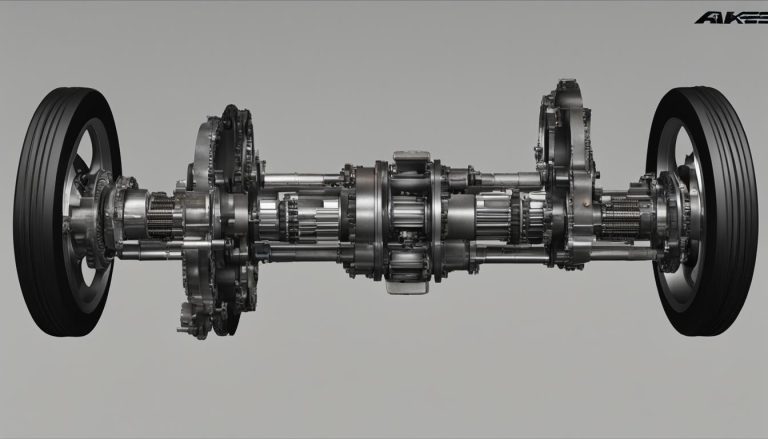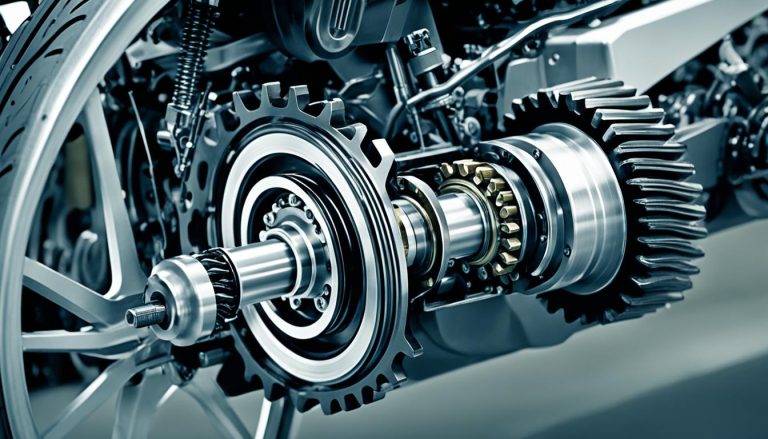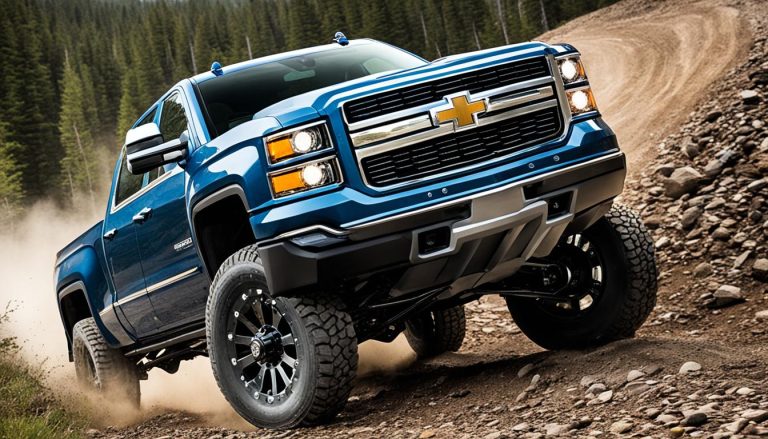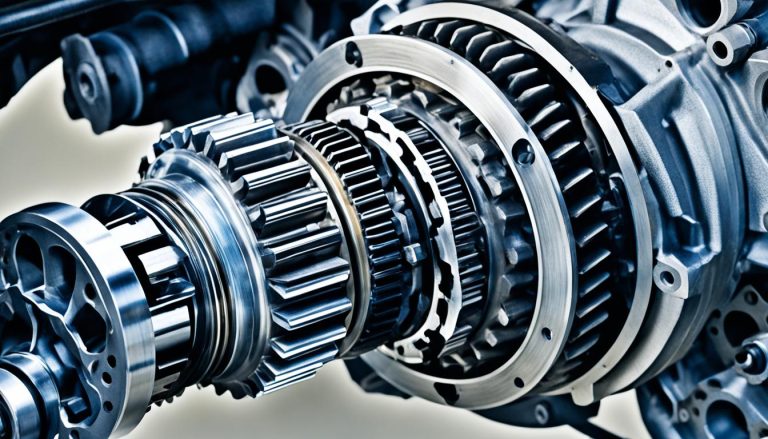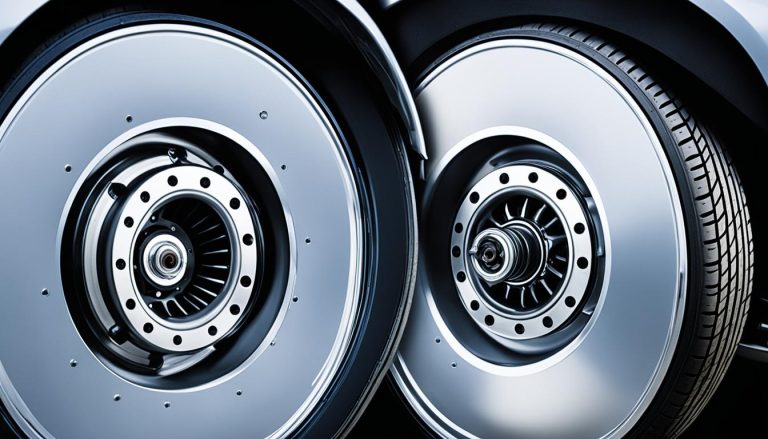Identify Limited Slip Differential Easily
Have you ever wondered how to tell if a rear differential is limited slip? You’re not alone, as identifying limited slip differential is a common quandary for car enthusiasts and everyday drivers alike. Recognizing the type of differential your car has is crucial, especially when it comes time to replace differential oil or when assessing the overall traction and performance of your vehicle.
While some Toyota models might hint at an LSD with a badge or a specification in the manual, it’s not always clear-cut evidence. Back in the day, LSDs could be spotted easily with a simple sticker on the differential housing, but don’t count on this alone – such stickers can fade and even peel off over time. Learning how to perform differential slip detection effectively can save you from the potential mishap of mixing incompatible oils, which can lead to unnecessary wear and costly repairs down the line.
Key Takeaways
- Understanding the type of rear differential—LSD or not—is vital for proper maintenance.
- A vehicle’s manual may offer clues, but a physical check is more reliable for determining LSD presence.
- Stickers on the differential housing used to indicate LSD, but they may not always be present or legible.
- Incompatibility between oils for LSDs and open differentials underscores the importance of accurate identification.
- Identification can prevent potential operational issues and wear caused by using incorrect oils.
- Differential slip detection techniques are straightforward and essential for any vehicle owner.
Understanding the Basics of Rear Differentials
When you’re behind the wheel, the performance of your vehicle often comes down to the components that go unnoticed, such as the rear differential. This integral part of rear-wheel drive systems plays a critical role in your car’s handling, especially when determining rear differential type.
A rear differential allows for the redistribution of power from the engine to the wheels, enabling them to rotate at different speeds. This is particularly crucial when turning, as the inside wheel needs to travel a shorter distance than the outside wheel. Recognizing signs of limited slip differential is key for an enhanced driving experience, especially on challenging surfaces where traction can vary.
Unlike the standard, or open differential, the limited slip differential (LSD) is engineered to sense when a wheel is losing grip and redirect torque to the wheel with more traction. For those with an eye for identifying limited slip differential in cars, this translates to improved control and stability under adverse conditions. When one considers the safety and performance implications of determining rear differential type, the value of knowing your differential becomes clear.
If you’re anticipating a turn on a slick road or navigating through rough terrain, the limited slip differential is your unsung hero, stepping up to distribute power more effectively. By recognizing the mechanics involved and the signs of limited slip differential, you can appreciate how this component bolsters your car’s performance and safety – informing decisions whether you’re in the driver’s seat or the mechanic’s shop.
Spotting the Signs of Limited Slip Differential
Knowing what to look for when suspecting a limited slip differential (LSD) in your vehicle is key. From auditory hints to performance tests, there’s a range of signs that can help you determine if your car is equipped with an LSD. Let’s go through some common indicators, so you can feel more confident about what’s happening beneath your vehicle.
Listen for Unusual Noises from the Rear
One of the most immediate signs of a limited slip differential is an unusual sound from the rear end of your car. Pay close attention for whining, grinding, or growling noises that occur especially when you’re accelerating or navigating curves. Sometimes these sounds are subtle, so it pays to listen carefully.
Testing the Differential’s Response during Turns
Another method for testing for a limited slip differential is to observe how your vehicle handles turns. An LSD is designed to minimize the speed difference between your vehicle’s wheels when turning, contributing to better control and less tire wear.
The Behavior of Your Vehicle on Varied Terrains
A vehicle with an LSD should demonstrate superior traction on challenging terrains. Whether you’re driving on slick ice, loose gravel, or sticky mud, a limited slip differential will divert power to the wheel with more grip, a feature which is unmistakably beneficial in maintaining steady progress under these conditions.
Experiencing any of these signs may prompt you to perform limited slip differential checks. For a more tangible assessment, locate a safe, controlled environment to test your car’s behavior when traction is varied. This real-world testing can be an excellent complement to the auditory and performance signs you’ve noticed.
| Condition | Open Differential Response | Limited Slip Differential Response |
|---|---|---|
| Sharp Turns | Inside wheel spins faster | Wheels maintain similar speeds |
| Acceleration | Can lose traction easily | Better grip and controlled launch |
| Muddy or Icy Surface | One wheel spins, other stays still | Power is transferred to the gripping wheel |
| Noise during Operation | Generally quieter in normal conditions | Possibility of whining or grinding noises |
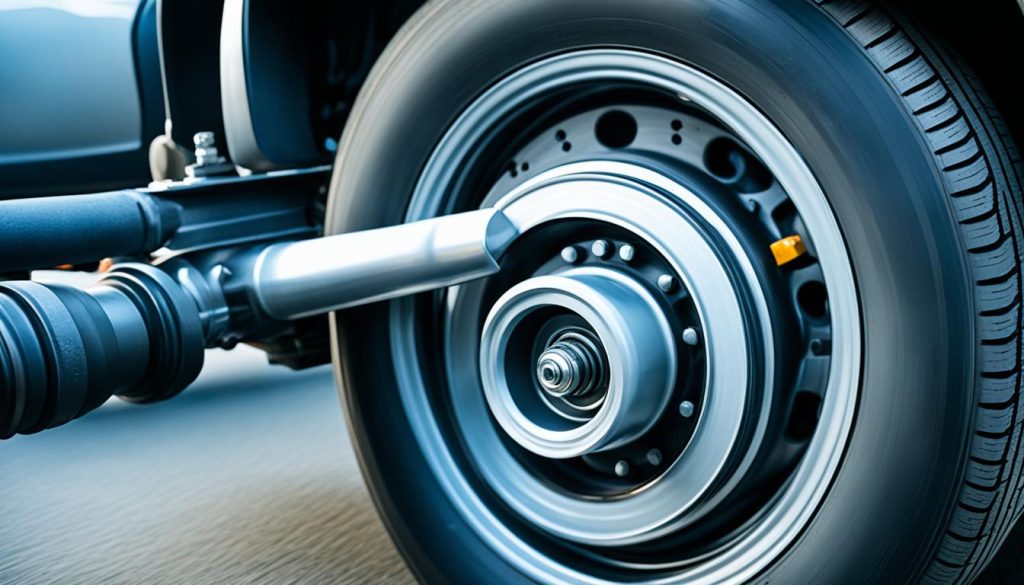
Visual Inspection: Deciphering the Physical Clues
When it comes to recognizing a limited slip differential, the process might seem daunting at first. However, paying close attention to certain physical attributes during a visual inspection can be incredibly telling. Even to the untrained eye, an LSD may reveal itself with subtle, yet distinctive features. Here’s what you might look for:
- Check the differential cover: Start by examining the cover itself. An open differential often has a cover secured by ten bolts. While this isn’t a hard and fast rule, it’s a common marker used by various manufacturers.
- Look for wear and tear: Old stickers or labels signifying an LSD may have worn away. Instead, look for factory-stamped identifiers that are often placed directly onto the metal casing.
- Bolt patterns: Sometimes, the pattern or number of bolts around the differential can be an indicator. While this is model-specific, certain bolt configurations can hint toward an LSD.
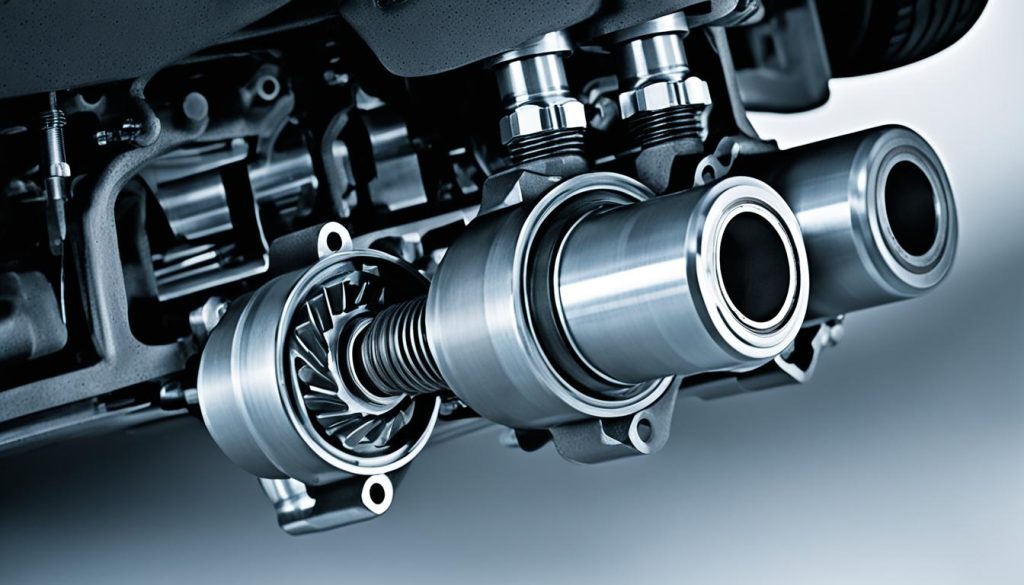
Understanding these identifiers is crucial in proper differential slip detection and maintenance. If you’re still uncertain or if the inspection raises more questions than answers, it’s wise to consult a professional. They can provide a definitive identification and ensure that your vehicle is adequately serviced to suit its specific needs.
How to Tell if a Rear Differential is Limited Slip
Diagnosing your vehicle’s differential type is easier than you might think. Whether you’re a seasoned mechanic or a curious car owner, understanding the mechanics of identifying limited slip differential can be quite straightforward. We’ll explore the hands-on approach as well as the tell-tale factory markings that distinguish how to tell if a rear differential is limited slip from its open counterpart.
Jacking up and Spinning the Wheels
One of the most hands-on methods to confirm the presence of an LSD involves getting your vehicle off the ground. Here’s a step-by-step guide to help you through the process:
- Park your vehicle on a level surface and place wheel chocks around the front tires to prevent rolling.
- Use a car jack to lift the rear of the vehicle, making sure to secure it with jack stands for safety.
- Ensure the car is out of gear with the parking brake disengaged before proceeding.
- Gently spin one of the rear wheels by hand. Observe the direction of the opposite wheel.
- An LSD will usually cause the opposite wheel to spin in the same direction, indicating that power is being distributed evenly.
- For a standard differential, the opposite wheel will rotate in the opposite direction, indicating no resistance to differential wheel speed.
Spotting Labels: Identifying LSD by Factory Markings
Manufacturers often mark limited slip differentials with distinct labels that can assist in identification. While these labels might be worn or missing on older vehicles, spotting them can confirm the presence of an LSD without the need for a more hands-on approach.
Comparison with Standard Differentials
Here’s a quick reference table comparing typical features of limited slip differentials to standard ones, further aiding in their identification:
| Feature | Limited Slip Differential | Standard Differential |
|---|---|---|
| Wheel Spin Direction (when lifted) | Same direction | Opposite direction |
| Traction Control | Improved traction on slippery surfaces | Poorer adaption to slip conditions |
| Factory Marking | Stickers or tags indicating LSD | Rarely marked or simply labeled ‘standard’ |
| Oil Type Requirement | Specific oil type for LSDs | General gear oil |
Understanding whether you have a limited slip differential is key to proper vehicle maintenance and can enhance your driving experience, especially in conditions where traction is vital. By following these straightforward checks, you can confidently identify whether your vehicle is equipped with an LSD and ensure it receives the right care and service.
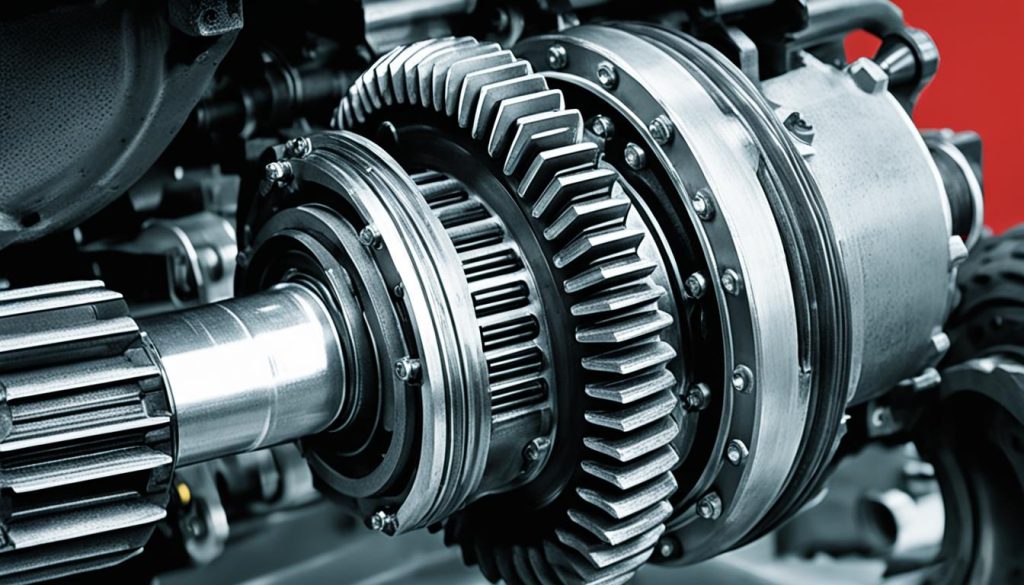
When to Consult a Specialist for Limited Slip Differential Checks
If you’ve been faithfully following the steps to identify your vehicle’s rear differential type, but find yourself second-guessing the results, or if your car shows signs of possible differential damage, it’s time to get an expert on board. Recognizing limited slip differential characteristics is critical for proper maintenance and operation, but there are instances where only a professional can provide the clarity and certainty you need. Pro Gear, for example, has been dedicating its services to automotive rear ends since 1991. Their experience can save you time and ensure your car runs optimally.
One should consider **limited slip differential checks** a priority, especially if unusual behaviors surface during driving. Whether it’s strange noises from the back of your vehicle, a difference in handling, or issues when engaging turns, these could be your car’s way of raising red flags. Don’t ignore these signs. When persistent issues arise that suggest trouble with your differential, seeking a seasoned specialist’s help could prevent more complex and costly repairs down the line.
So, if you’ve done your part in looking for clues and still feel uncertain about your differential’s status, let’s get you on the right track. Specialty shops like Pro Gear come equipped with the tools and expertise necessary to diagnose and rectify any quirks in your rear-end setup, ensuring safety and performance on the road. Remember, maintaining your limited slip differential not only prolongs its life but also preserves the dynamic driving experience you cherish. Reach out to a trusted professional whenever you’re in doubt, and keep your ride in top form.
FAQ
How can I tell if my rear differential is a limited slip differential?
You can perform a simple test by jacking up the rear end of your car, spinning one wheel by hand, and observing the movement of the opposite wheel. If it spins in the same direction, it’s likely you have a limited slip differential. Alternatively, look for factory markings or count the number of bolts on the differential cover for clues.
What are the basic differences between a limited slip differential and a standard differential?
A standard, or open, differential allows the wheels to spin at different speeds, which is essential for turning corners. A limited slip differential also allows for different wheel speeds but it limits the difference in speed, distributing more power to the wheel with more traction, which is especially useful in low-grip situations.
What kinds of noises might indicate I have a limited slip differential?
Unusual noises like whining, grinding, or growling from the rear of the vehicle during acceleration or turning can be indicative of a limited slip differential, especially if the noises are more pronounced during these actions.
How does a limited slip differential respond when driving on varied terrains?
A vehicle with a limited slip differential tends to handle better on slippery or uneven terrains by providing superior traction. Power is diverted to the wheel with the greatest grip, helping to maintain control in challenging conditions.
What physical clues can help me identify a limited slip differential on visual inspection?
When visually inspecting, you can look for identifying labels or count the number of bolts on the differential housing. For instance, ten bolts often imply an open differential. It’s important to note that visual clues may vary by manufacturer and model.
What should I do if I suspect my limited slip differential isn’t functioning properly?
If you notice operational anomalies or persistent unusual noises, it’s advisable to consult a specialist with experience in rear-end work, such as a reliable transmission or rear end specialist, for a definitive diagnosis and possible repair.
Can I rely on factory markings to accurately identify a limited slip differential?
While factory markings can be helpful in identifying a limited slip differential, they may be worn or missing, especially on older models. If present, they can provide a quick confirmation of the differential type.
What is the importance of confirming whether I have a limited slip differential?
It’s important to confirm the type of differential you have to ensure proper maintenance, such as using the correct type of oil. Mixing oils meant for different types of differentials can lead to suboptimal performance or even damage.
Are there any risks associated with testing the differential by jacking up the car and spinning the wheels?
When performing this test, safety is paramount. Always make sure the car is securely jacked up and that it’s out of gear with the handbrake disengaged before spinning the wheels. If you’re unsure about safety procedures, it’s best to have a professional perform the test.

